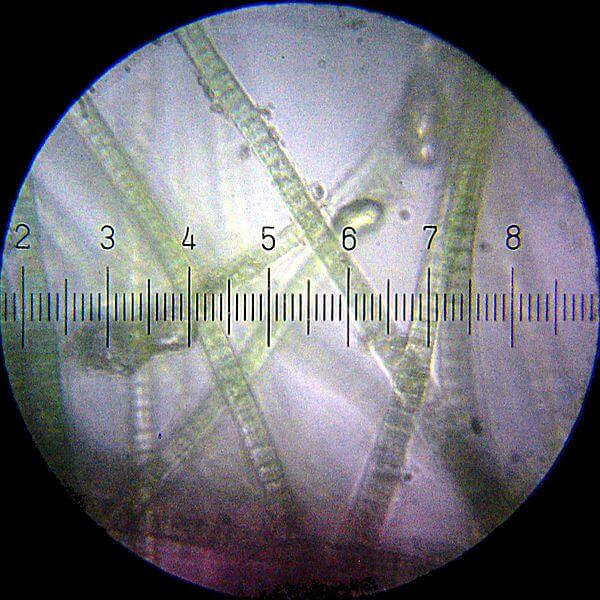Technion researchers published in Nature that they found an answer to this age-old question

How is long-term coexistence possible between bacteria in the sea and the viruses that infect them? This question has troubled scientists for many years. Technion researchers from the Faculty of Biology have now found an answer to this question. This is what the prestigious scientific journal "Nature" reveals. This coexistence is possible thanks to the variation in the bacterial population in the content of the genes that allow the viruses to attach to the bacteria and infect them.
Cyanobacteria are bacteria that perform photosynthesis similar to plants. Their ecological importance lies in the production of sugars that form the basis of the food web in the sea, and in the creation of oxygen that all productions on Earth breathe. Also, the cyanobacteria absorb carbon dioxide (CO2), which is a greenhouse gas responsible for climate change, thus reducing its amount in the atmosphere.
The coexistence between large amounts of cyanobacteria and the viruses that infect them has lasted for millions of years and allows the cyanobacteria to continue fulfilling their important ecological role. Theoretically, such an amount of viruses should have caused the collapse of the cyanobacteria population.
One of the mechanisms that can explain the coexistence of viruses and cyanobacteria is that in the cyanobacteria population there are individuals that are resistant to viruses as well as those that are sensitive to them.
"We looked for virus-resistant cyanobacteria to check what leads to this resistance," say the researchers, Dr. Debbie Lindel and PhD student Sarit Avrani. "We used a new technology that makes it possible to re-sequence the genome, at a relatively cheap cost, which allowed us to test many varieties and do in-depth work."
They took strains of viruses and cyanobacteria, mixed them and grew them. "Most cyanobacteria die because the viruses kill them," Sarit explains. "The few that survived are actually bacteria that the viruses couldn't. We extracted and sequenced their genome and found the mutations that resulted in this resistance and their location in the cyanobacterial genome. Most of the mutations were in the genes responsible for creating proteins that affect the surface structure of the cyanobacteria. The mutations actually prevent the virus from entering the content.
The researchers worked in collaboration with Dr. Itai Sharon, a post-doctoral student from the Technion, and with Dr. Rotem Shurk and doctoral student Omri Wurtzel from the Weizmann Institute.
The researchers found that most of the mutations were found in a specific region of the genome called a "genomic island". This is one of five known "genomic islands" in this group of cyanobacteria. These islands are areas where the gene content differs between different individuals in the wild populations. This night of genes originates not in their ancestors but in completely different creatures. In contrast, most of the genome contains the same genes organized in the same order in all individuals in the population.
The location of the mutations in a genomic island means that a small part of the population contains the genes that allow a certain virus to infect them, and another part of the population contains different genes that allow another virus to infect them, and so on, so that the population of cyanobacteria consists of many subgroups, each infected by a different part of The virus population. In such a situation there is a very low chance that a virus will be able to find and infect a suitable cyanobacterium during its lifetime. In this way, the collapse of the cyanobacteria population is avoided and a long-term coexistence is created.
Additional implications of these findings are that by this mechanism, viruses "encourage" the existence of high variability in gene content in the genomic islands of the cyanobacteria populations, and in this way influence the evolution of their genomes. This variation may allow cyanobacteria to survive in changing environmental conditions.

6 תגובות
very interesting. Thanks.
To 2: Yes, you understood correctly. It is known that there is a high genetic diversity in the bacterial population, so there are many bacteria with different sensitivity/resistance to the multitude of viruses in the sea, there is no single virus that can cause the collapse of the entire population. In addition, it will be difficult for a particular virus to find a suitable bacteria for infection among all the other bacteria. Therefore there is no chance that the multitude of different viruses will cause the bacterial population to collapse.
Talk about coexistence not cooperation. Although the increase in defensive diversity by natural selection can be thought of as a positive thing with the potential to allow adaptation to different environmental conditions. In addition (but not the subject of this article) viruses can transfer new genes from bacterium to bacterium that can give it new properties. But this is possible under conditions where the virus enters the cell but does not kill it.
And one more thing - I didn't understand what cooperation there is between bacteria and viruses - after all, viruses destroy the bacteria they penetrate...
There is this sentence that makes it difficult to understand the article:
"In such a situation there is a very low chance that a virus will be able to find and infect a suitable cyanobacterium during its lifetime. This way, the collapse of the cyanobacteria population is avoided and a long-term coexistence is created."
According to what I understand, yes, some of the bacteria get infected and die, but not all of them because of the genetic variation - meaning that each bacteria has resistance to certain viruses and sensitivity to others - is this true?
In addition to all the important things mentioned here regarding what cyanobacteria do, one more important thing can be added - cyanobacteria fix atmospheric nitrogen, thereby introducing it into the marine food web.